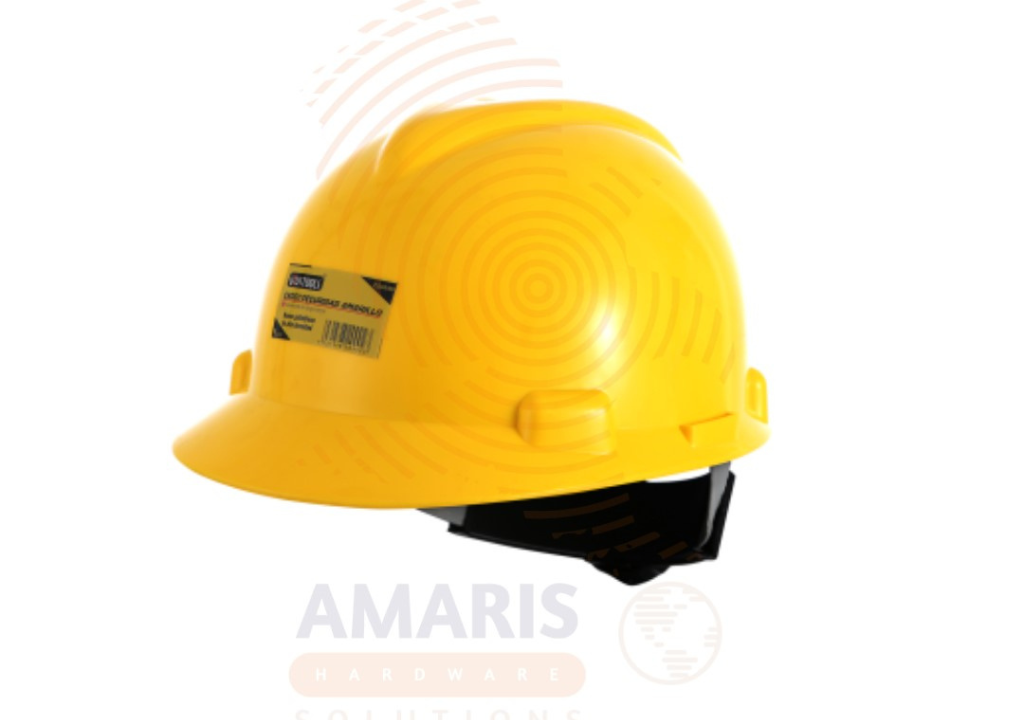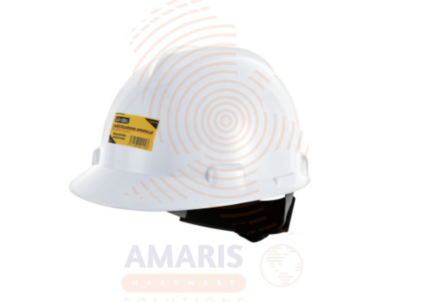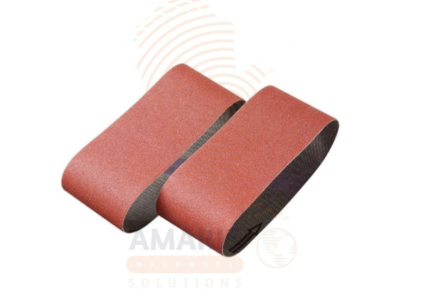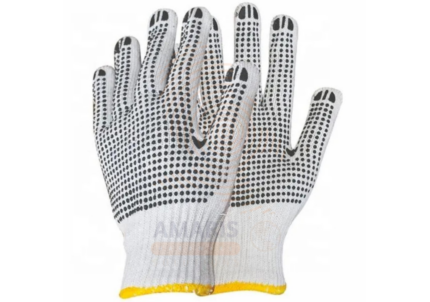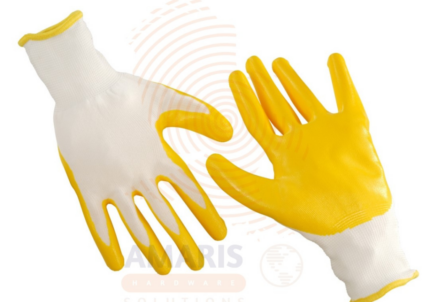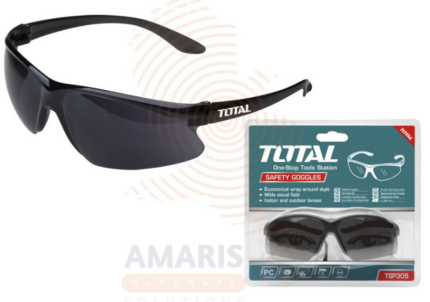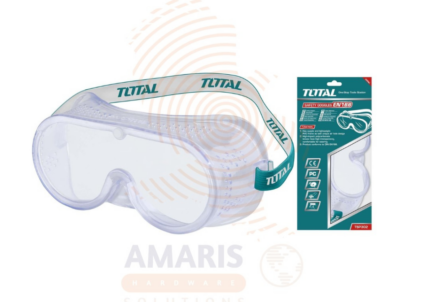Safety Helmet (Yellow)
WhatsApp Order
A safety helmet (yellow) is a protective headgear designed to mitigate the impact of potential head injuries in various industrial, construction, or recreational settings. Typically colored yellow for high visibility, it consists of a hard outer shell made of durable materials, such as plastic or fiberglass, and an inner suspension system to absorb and distribute impact energy. This safety equipment is crucial for safeguarding individuals from falling objects, impacts, or other potential hazards, promoting occupational safety and minimizing the risk of head injuries.
Description
Table of Contents
ToggleSafety Helmet (Yellow)
Uses
-
Construction Sites:
-
Protects workers from falling objects, debris, and potential head injuries in construction zones.
-
Enhances visibility to improve on-site safety and communication.
-
-
Industrial Workplaces:
-
Guards against impact hazards, such as machinery parts or tools, in manufacturing and industrial settings.
-
Promotes safety compliance and reduces the risk of head injuries.
-
-
Mining Operations:
-
Shields miners from falling rocks, equipment, or other hazards prevalent in mining environments.
-
Facilitates easy identification of workers in dimly lit or underground conditions.
-
-
High-Risk Zones:
-
Worn by workers in areas with a high risk of head injuries, such as areas with heavy machinery, elevated work, or confined spaces.
-
The yellow color enhances visibility in environments with low light or poor visibility conditions.
-
-
Emergency Response and Rescue:
-
Used by emergency responders and rescue personnel during disaster response and rescue operations.
-
Helps in quick identification and ensures the safety of the rescue team.
-
-
Traffic Control and Road Work:
-
Worn by road construction workers and traffic controllers to protect against vehicle-related accidents.
-
Yellow color improves visibility, especially in situations where workers are close to moving traffic.
-
-
Electricity and Utilities:
-
Provides protection against electrical shocks and potential head injuries for workers involved in electrical installations or utility maintenance.
-
Enhances safety in environments with electrical hazards.
-
-
Recreational Activities:
-
Used in activities such as cycling, skateboarding, or rock climbing to protect against head injuries.
-
The yellow color adds visibility, making the wearer more noticeable in outdoor settings.
-
-
Events and Crowd Control:
-
Worn by personnel managing events or crowds to ensure their safety, especially in situations where there is a risk of head injuries.
-
-
Training and Education:
-
Employed in educational and training environments to instill safety practices and familiarize individuals with the use of personal protective equipment.
-
SAFETY HANDLING PRECAUTIONS
Safety Precautions
-
Proper Fit:
-
Ensure that the safety helmet fits securely on the wearer's head without being too tight or too loose.
-
Adjust the suspension system to provide a snug and comfortable fit.
-
-
Regular Inspection:
-
Inspect the safety helmet regularly for signs of damage, cracks, or other defects.
-
Check for any deformities, and replace the helmet if it shows signs of wear and tear.
-
-
Correct Positioning:
-
Position the safety helmet correctly on the head, ensuring that it covers the forehead, top of the head, and the back of the head.
-
The helmet's brim should be parallel to the ground.
-
-
Chin Strap Use:
-
Always use the chin strap provided with the safety helmet.
-
Fasten the chin strap securely to prevent the helmet from falling off during work activities or in the event of an impact.
-
-
Visibility Enhancement:
-
If the helmet is yellow for high visibility, ensure it remains clean and visible at all times.
-
Replace faded or damaged helmets to maintain optimal visibility.
-
-
Avoid Modifications:
-
Do not modify the safety helmet, such as drilling holes or removing components, as this may compromise its structural integrity.
-
-
Appropriate Use:
-
Use the safety helmet only for its intended purpose and in environments where head protection is necessary.
-
Select the right type of helmet based on the specific hazards present in the work environment.
-
-
Training and Education:
-
Ensure that all individuals required to wear safety helmets receive proper training on their correct use and maintenance.
-
Educate users about the importance of wearing helmets consistently.
-
-
Replace Damaged Helmets:
-
Immediately replace any safety helmet that has been subjected to a significant impact, even if there are no visible signs of damage.
-
Helmets are designed to absorb impact energy and may not provide adequate protection after a severe impact.
-
-
Follow Regulations and Standards:
-
Adhere to industry regulations and standards regarding the use of safety helmets.
-
Ensure that the safety helmet meets relevant safety standards and certifications.
-
-
Store Properly:
-
Store helmets in a cool, dry place away from direct sunlight and chemicals.
-
Avoid hanging helmets on hooks, as this may distort their shape.
-
Related products
Gas Respirator
PRODUCT DESCRIPTION
A gas respirator, also known as a gas mask, is a personal protective equipment device designed to provide a wearer with respiratory protection against the inhalation of harmful gases, vapors, and particulate matter in the air. It typically consists of a face piece that covers the nose and mouth, along with filters or cartridges that remove or neutralize contaminants from the air before the wearer breathes it in. Gas respirators are commonly used in various industries, emergency response situations, and military applications to safeguard individuals from exposure to hazardous airborne substances.
Insulated Combination Pliers
An insulated combination pliers is a type of hand tool designed for various gripping, cutting, and twisting tasks, featuring insulated handles to provide protection against electric shocks. These pliers typically have dual functionalities, combining elements of both lineman's pliers and long-nose pliers. The insulated handles are made of materials that offer electrical insulation, making them suitable for use in electrical and live-wire work to reduce the risk of electrical accidents. Insulated combination pliers are commonly used by electricians and other professionals working with live electrical circuits.
Insulated Safety Boots
Insulated safety boots are a type of footwear designed to provide protection for the feet in hazardous work environments while also offering insulation against extreme temperatures. These boots are commonly used in industries such as construction, manufacturing, and utilities where workers are exposed to various risks, including heavy objects, sharp materials, electrical hazards, and cold weather conditions.
Polyester Knit Glove
A polyester knit glove is a type of protective hand wear crafted from polyester fibers using a knitting process. These gloves are characterized by their lightweight, flexible, and breathable nature, making them suitable for a wide range of applications. The knit construction allows for a snug fit and dexterity, while the polyester material provides resistance to abrasions, dirt, and minor cuts. Polyester knit gloves find common use in various industries such as manufacturing, assembly, electronics, food handling, and general-purpose tasks where a balance of hand protection and tactile sensitivity is required.
Rubber Coated Gloves (Yellow)
Rubber Coated Gloves (Yellow) are protective handwear designed for improved grip, durability, and safety in industrial, construction, gardening, and general handling tasks. These gloves feature a textured rubber coating—typically on the palm and fingers—over a flexible fabric liner, offering excellent resistance to abrasion, punctures, and light liquid exposure. Their yellow color enhances visibility, making them ideal for work environments where safety and control are critical.
Safety Goggles (only for welding)
Safety Goggles (only for welding) are specialized protective eyewear designed to shield the eyes from intense light, sparks, and debris produced during welding operations. These goggles are fitted with dark-tinted or shaded lenses that filter harmful ultraviolet (UV) and infrared (IR) radiation emitted by welding arcs and flames. They offer a snug, wraparound design to prevent particles and light from entering the sides, making them ideal for gas welding, cutting, brazing, and soldering. Their compact form factor makes them a convenient choice for close-up tasks and confined workspaces.
Safety Goggles (PVC)
Safety Goggles (PVC) are protective eyewear designed to shield the eyes from potential hazards in various environments, such as industrial workplaces, laboratories, or construction sites. These goggles typically feature impact-resistant lenses and a form-fitting frame to provide a barrier against flying debris, liquids, chemicals, or other materials that could cause harm to the eyes. The primary purpose of safety goggles is to enhance eye safety and prevent injuries by creating a physical barrier between the eyes and potential dangers, ensuring a higher level of occupational or recreational safety.
Safety Helmet (White)
A Safety Helmet (White), commonly referred to as a hard hat, is a head protection device designed to safeguard individuals from head injuries in various industrial, construction, or other occupational settings. The helmet typically consists of a hard outer shell made of impact-resistant materials, such as high-density polyethylene or fiberglass, and an inner suspension system that helps absorb and distribute impact energy. The white color of the safety helmet may serve functional or visibility purposes, such as enhancing the wearer's visibility in low-light conditions or indicating a specific role or status on a work site. The primary goal of a safety helmet is to provide protection against falling objects, impact, and electrical hazards, promoting the overall safety of individuals in hazardous work environments.


 Acrylic Sealants
Acrylic Sealants Construction Adhesives
Construction Adhesives Double-Sided Tape
Double-Sided Tape Duct Tape
Duct Tape Electrical Tape
Electrical Tape Epoxy & Resins
Epoxy & Resins Masking Tape
Masking Tape
 Automotive Wrenches & Socket Sets
Automotive Wrenches & Socket Sets Battery Chargers & Jump Starters
Battery Chargers & Jump Starters Car Jacks & Stands
Car Jacks & Stands Car Wash & Detailing Products
Car Wash & Detailing Products Diagnostic Tools
Diagnostic Tools Tire Inflators
Tire Inflators Vehicle Lighting
Vehicle Lighting Oil & Lubricants
Oil & Lubricants
 Adhesives & Sealants
Adhesives & Sealants Bricks & Blocks
Bricks & Blocks Cement & Concrete
Cement & Concrete Drywall & Plaster
Drywall & Plaster Flooring (Tiles, Wood, Laminate)
Flooring (Tiles, Wood, Laminate) Lumber & Plywood
Lumber & Plywood Paints, Primers & Coatings
Paints, Primers & Coatings Insulation Materials
Insulation Materials Roofing Materials
Roofing Materials
 Circuit Breakers
Circuit Breakers Electrical Cables & Wires
Electrical Cables & Wires Switches & Sockets
Switches & Sockets Fuses & Relays
Fuses & Relays Connectors & Terminals
Connectors & Terminals Electrical Boxes & Panels
Electrical Boxes & Panels Conduit & Fittings
Conduit & Fittings Lighting Fixtures & Bulbs
Lighting Fixtures & Bulbs Extension Cords & Power Strips
Extension Cords & Power Strips
 Anchors
Anchors Bolts
Bolts Clips & Clamps
Clips & Clamps Screws
Screws Nuts
Nuts Washers
Washers Rivets
Rivets Nails
Nails Threaded Rods
Threaded Rods
 Hammers
Hammers Measuring Tools (Tapes, Levels, Calipers)
Measuring Tools (Tapes, Levels, Calipers) Screwdrivers
Screwdrivers Pliers & Cutters
Pliers & Cutters Saws & Blades
Saws & Blades Chisels & Punches
Chisels & Punches Allen Keys & Hex Keys
Allen Keys & Hex Keys Ratchets & Socket Sets
Ratchets & Socket Sets Wrenches & Spanners
Wrenches & Spanners
 Power Tool Accessories (Blades, Bits, Discs)
Power Tool Accessories (Blades, Bits, Discs) Rotary Tools
Rotary Tools Saws (Circular, Jigsaw, Reciprocating)
Saws (Circular, Jigsaw, Reciprocating) Drills & Drivers
Drills & Drivers Grinders & Sanders
Grinders & Sanders Heat Guns
Heat Guns Nail Guns
Nail Guns Impact Wrenches
Impact Wrenches Batteries & Chargers
Batteries & Chargers
 Pipes & Fittings (PVC, Copper, PEX)
Pipes & Fittings (PVC, Copper, PEX) Plumbing Tools
Plumbing Tools Pumps & Motors
Pumps & Motors Sealants & Adhesives for Plumbing
Sealants & Adhesives for Plumbing Valves & Taps
Valves & Taps Water Heaters
Water Heaters Drainage Systems
Drainage Systems Faucets & Fixtures
Faucets & Fixtures Hoses & Tubing
Hoses & Tubing
 Hinges & Latches
Hinges & Latches Hooks & Brackets
Hooks & Brackets Window Hardware
Window Hardware Chains & Cables
Chains & Cables Casters & Wheels
Casters & Wheels Shelving & Storage Systems
Shelving & Storage Systems Door Handles & Locks
Door Handles & Locks Drawer Slides & Cabinet Hardware
Drawer Slides & Cabinet Hardware
 Personal Protective Equipment (PPE)
Personal Protective Equipment (PPE) Respirators & Masks
Respirators & Masks Safety Glasses
Safety Glasses Safes
Safes Security Cameras
Security Cameras Gloves
Gloves Helmets
Helmets Ear Protection
Ear Protection Fire Safety Equipment
Fire Safety Equipment Locks & Padlocks
Locks & Padlocks Motion Sensors & Alarms
Motion Sensors & Alarms
 Garden Fencing
Garden Fencing Garden Furniture Hardware
Garden Furniture Hardware Lawn Mowers
Lawn Mowers Trimmers & Edgers
Trimmers & Edgers Shovels & Spades
Shovels & Spades Rakes & Hoes
Rakes & Hoes Pruning Shears & Loppers
Pruning Shears & Loppers Watering Systems (Hoses, Sprinklers, Nozzles)
Watering Systems (Hoses, Sprinklers, Nozzles)
 Interior Paints
Interior Paints Paint Brushes & Rollers
Paint Brushes & Rollers Paint Strippers & Thinners
Paint Strippers & Thinners Paint Trays & Accessories
Paint Trays & Accessories Exterior Paints
Exterior Paints Spray Paints
Spray Paints Primers & Undercoats
Primers & Undercoats Varnishes & Stains
Varnishes & Stains
 Gaskets & Seals
Gaskets & Seals Hydraulic Fittings
Hydraulic Fittings Industrial Fasteners
Industrial Fasteners Industrial Hoses
Industrial Hoses Lubricants & Greases
Lubricants & Greases Metal Sheets & Bars
Metal Sheets & Bars Bearings & Bushings
Bearings & Bushings Belts & Pulleys
Belts & Pulleys
 HVAC Filters
HVAC Filters Insulation for HVAC
Insulation for HVAC Air Conditioners
Air Conditioners Refrigerants
Refrigerants Ventilation Ducts & Fittings
Ventilation Ducts & Fittings Thermostats & Controllers
Thermostats & Controllers Fans & Blowers
Fans & Blowers
 Pegboards & Hooks
Pegboards & Hooks Shelving Units
Shelving Units Storage Bins & Containers
Storage Bins & Containers Toolboxes & Tool Chests
Toolboxes & Tool Chests Workbenches
Workbenches Drawer Organizers
Drawer Organizers Labeling Supplies
Labeling Supplies
 Welding Accessories (Clamps, Brushes)
Welding Accessories (Clamps, Brushes) Welding Electrodes & Rods
Welding Electrodes & Rods Welding Helmets & Gloves
Welding Helmets & Gloves Welding Machines
Welding Machines Soldering Irons & Stations
Soldering Irons & Stations Flux & Solder Wire
Flux & Solder Wire
 Generator Accessories
Generator Accessories Inverters
Inverters Portable Generators
Portable Generators Power Inverters
Power Inverters Transfer Switches
Transfer Switches Diesel & Gasoline Generators
Diesel & Gasoline Generators
 Transport Equipment: Carts, Dollies, and Hand Trucks
Transport Equipment: Carts, Dollies, and Hand Trucks Storage Solutions: Pallets, Racks, and Containers
Storage Solutions: Pallets, Racks, and Containers Lifting Equipment: Hoists, Cranes, and Jacks
Lifting Equipment: Hoists, Cranes, and Jacks Conveyors and Accessories: Belts and Rollers
Conveyors and Accessories: Belts and Rollers